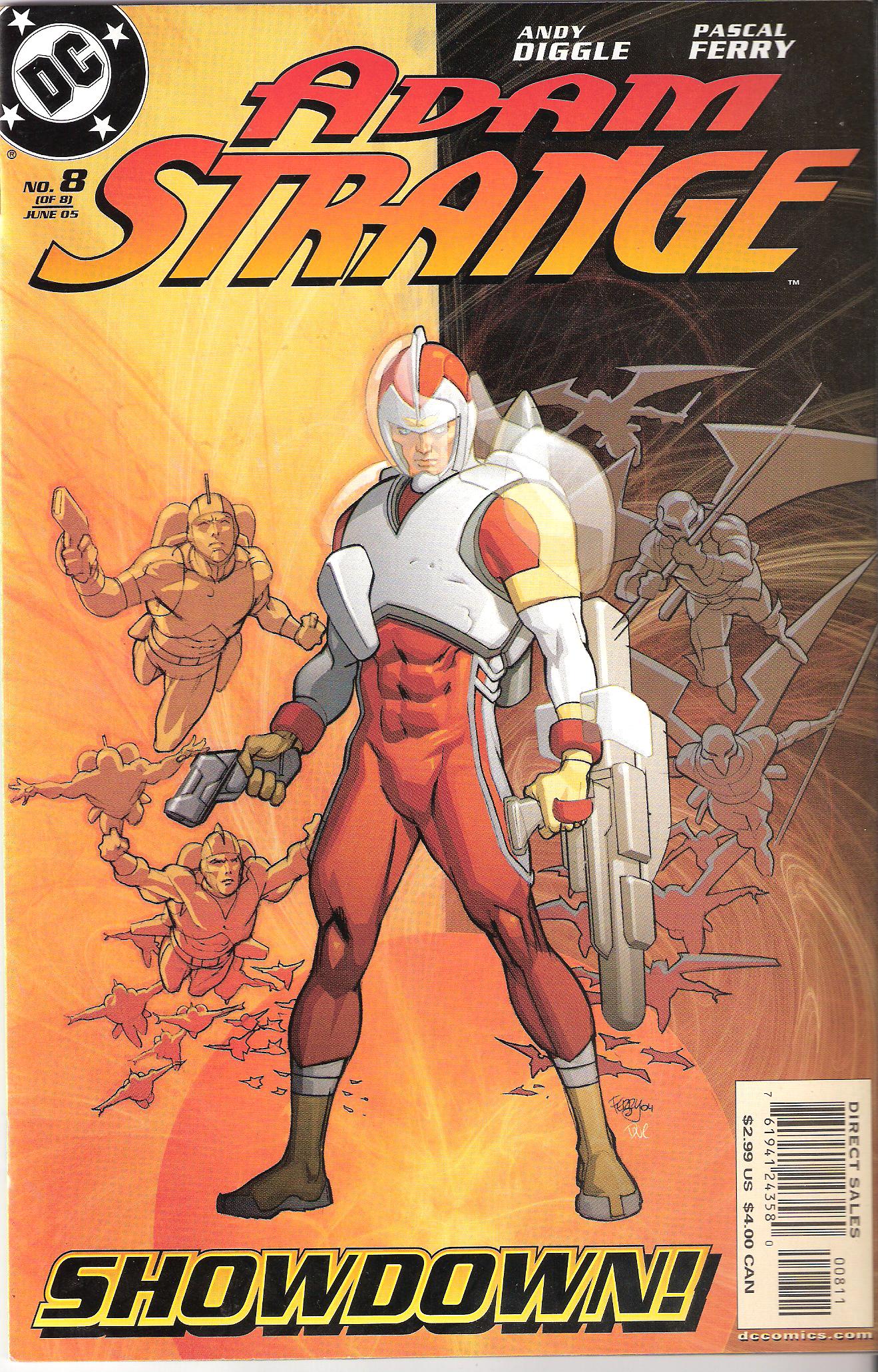
You may remember the announcement last fall that a planet had been discovered orbiting one of the three stars in the Alpha Centauri system, the system closest to our own. In fact, if you’re reading this, chances are pretty good that you do remember. For some comic book fans, though, there was a definite sense of déjà vu to the announcement.
Since the late 1950s, comic readers have had a chance to visit Rann, a planet in the Alpha Centauri system, and share the adventures of Adam Strange, an archeologist from Earth who, among his accomplishments, redefined the phrase “long commute.”
Adam made his debut in Showcase #17, published by DC Comics in 1958. He was one of two characters DC introduced at that time, in order to capitalize on the interest in outer space spawned by the burgeoning space race between America and the Soviet Union. Editor Julius Schwartz developed the basic format for the character, but he brought in Gardner Fox, a veteran comic and pulp writer, to co-plot and script the individual stories.
Strange is an archeologist on a dig in South America when, without warning (is there any other way?), he is teleported to Rann. He learns where he is and how he got there from the kindly scientist Sardath and his beautiful daughter Alanna. It turns out that Sardath has been transmitting something he calls zeta-beams to Earth, in order to communicate with humanity. However, some unknown force has mutated the zeta-beams into a teleportation ray (Don’t you hate it when that happens?)
The effects of zeta-beam wear off, but not before Adam helps to defeat an alien invasion and develops a crush on Alanna. Even better: more zeta-beams are going to hit Earth, and he knows when and where these events are going to happen.
After his audition in Showcase, Adam earned a berth in Mystery In Space, where he appeared regularly until 1965. During this time, the stories were produced by Fox and Schwartz, while Carmine Infantino and Murphy Anderson contributed the art. This is the period when our frequent flyer earned his reputation.
At his best, Adam Strange is a unique combination of science fiction and super hero elements. The parallels to John Carter are pretty obvious, but it may be worth pointing out that the Silver Age of super-hero comics began in the late 1950s and early ‘60s. Gardner Fox was also writing traditional super-heroes for DC and didn’t take long for him to have Strange meet Hawkman and the newly-formed Justice League of America. He didn’t wear a mask, or have a secret identity, but he definitely had a secret life. And his super power was something that readers could easily identify with: keen wits and an understanding of science.
According to interviews given by both Fox and Schwartz, many of Adam’s adventures began with a cover image, or a specific problem, and the story grew from that. The problem would often be solved by Strange’s knowledge of science. One side effect of this approach is that the stories often included a piece of scientific trivia. “The Planet That Came to a Standstill” includes the following footnote: “Experiments with a centrifuge by Navy researchers at Johnsville, Pennsylvania have shown that the human body can withstand the force of 25gs—but theorize it can ‘take’ much greater pressures.”
This focus on real science and problem solving did lead to some contrived situations, and some peculiar covers by modern standards. Sometimes, the problem would have to be explained with text, as seen in the cover for “World War on Earth and Rann,” first published in Mystery In Space #82, in 1963. Adam is thinking: “My native planet Earth—and my adopted planet Rann—each in deadly peril! There’s time for me to save only one! Which shall it be?” Still, this emphasis on brainpower over firepower gave the series a distinctive tone.
The Infantino-Anderson art team gave the series an equally distinctive look. Anderson’s meticulous inks grounded Infantino’s flamboyant designs and together they created a sense that Rann existed beyond the borders of the page.
Since those early days, Adam has appeared regularly in DC comics. He’s even been allowed to evolve, to a certain extent. He made Rann his permanent home; married Alanna and they had a daughter, Aleea. One noteworthy appearance was in two issues of Swamp Thing, in 1987, scripted by Alan Moore.
As he did with Swamp Thing, Moore proposed a different version of Strange’s origin. According to this story, he was brought to Rann as a breeding stud, because the native population was primarily sterile Many of these natives considered Adam to be little better than a trained monkey.
This scenario does explain the discrepancy between the idea of the zeta-beam as communication and the idea of zeta-beam as teleport ray; Sardath was lying. I could never quite buy that Strange was secretly hated by the general populace. That flew in the face of too many other stories.
Also, part of the appeal of a sword and planet story—to me, anyway—is watching the protagonist gain a purpose and a sense of empowerment on his new home. For Adam to be so manipulated for so long didn’t make any sense to me. It still doesn’t.
Adam Strange has not appeared in DC comic since DC’s super-hero universe was relaunched as “The New 52 “ in 2011. He did, however, make an appearance in the animated TV series Young Justice. There was no scientific puzzle for Adam to solve, but he was definitely more interested in out-smarting the enemy rather than overwhelming him. And that was good to see.











